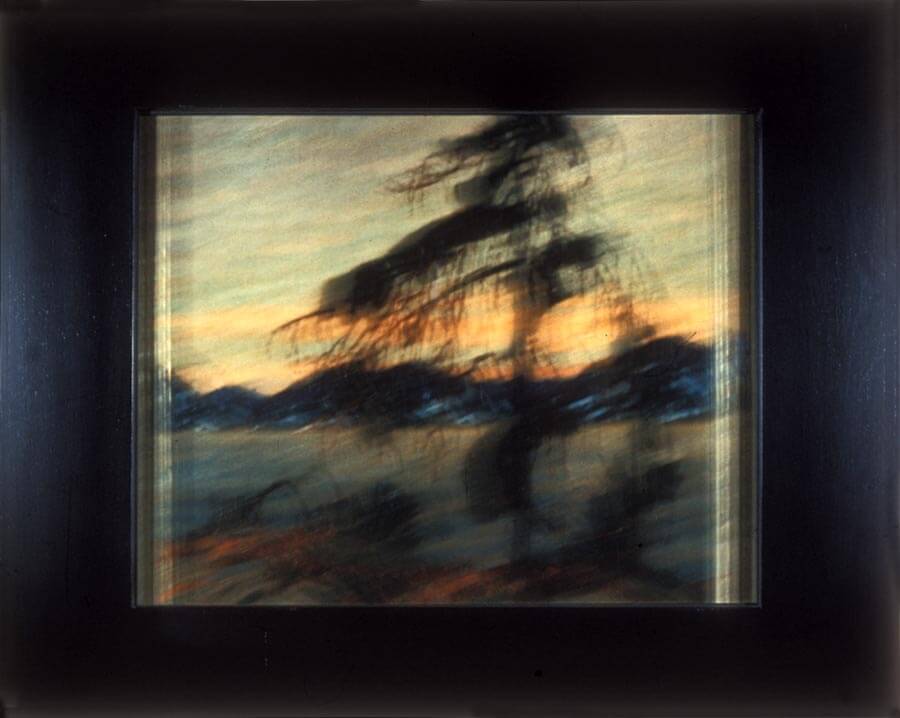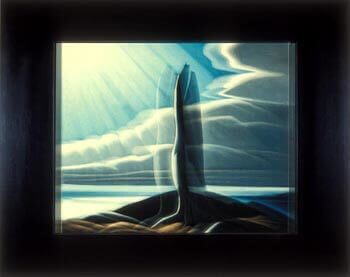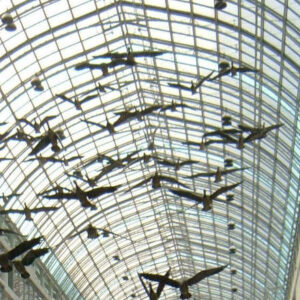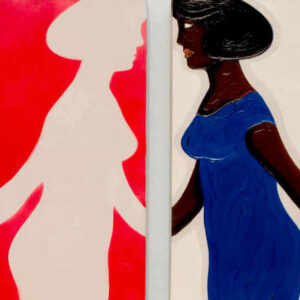Plus Tard 1977

Michael Snow, Plus Tard #20, 1977
1 of 25 framed dye coupler prints, each 86.4 x 107.2 cm
National Gallery of Canada, Ottawa
Michael Snow took the photographs for his serial work Plus Tard at the National Gallery of Canada in a gallery dedicated to the paintings of Tom Thomson (1877–1917) and the Group of Seven. These works are embedded in Canadian cultural memory as the foundations of a national school of distinctly Canadian character. They are canonical, in other words, and Snow’s use of them has sometimes been interpreted as an appropriation of the canon, possibly Oedipal in its desires. The apparent nationalism of this reading is deflected when we learn that Snow first came up with the basic concept as something he might develop for the room dedicated to Henri Matisse (1869–1954) at the Museum of Modern Art in New York.

What initially appealed to Snow about both sites was the possibility of translating painterly gestures to the camera: blending colours, for example, by moving the camera during a long exposure. The National Gallery installation seemed promising because of the pure colour and active surfaces, especially the evidence of brush strokes in many of the Thomson and Group of Seven landscapes. Regardless of the subject, this was not to be a work about the nature of painting, but something purely photographic. Plus Tard is explicitly about time as it creates images that only a camera can “see.” The landscape paintings are the subjects, but Snow is the subject as an artist using a machine to record his gestures and movements in the gallery space. The photographs are composed with considerable energy and variety, from close tremulous studies to angular groupings that include features of the room. That room, incidentally, is itself part of Canadian cultural history, being in the old National Gallery, the Lorne Building on Elgin Street in Ottawa.
Snow extended these spatial considerations in his framing of the photographs, which is inextricably part of the work. The prints are suspended or sandwiched between sheets of Plexiglas, making the walls of the gallery in which Plus Tard is hung part of the work. The frames themselves are dark and heavy, drawing black rectangles around these lively, colourful images of the past. This decision encourages the interpretation that Plus Tard is an elegy. Perhaps “memory” is a better word for a work that in Canada prompts recollections of much-reproduced modern paintings, and elsewhere in the world evokes the aura of an original work of art, now absorbed into another, to be seen later (the English for plus tard).

 About the Author
About the Author
 Download PDF
Download PDF
 Credits
Credits